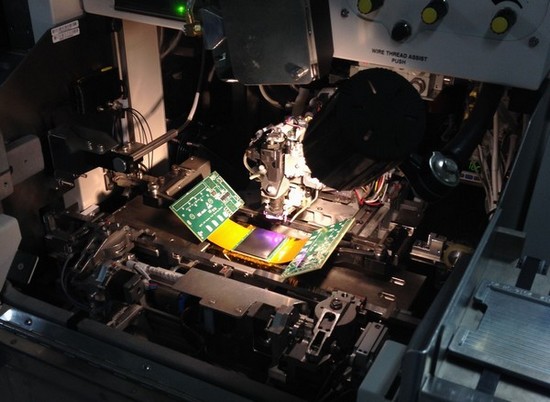A single-chip module of the silicon pixel detector developed by IHEP with intellectual property rights was tested at BSRF on July 30th, 2015. Designed for synchrotron radiation imaging applications, its performance was thoroughly tested and proven to meet all the designed specifications, a significant milestone to our silicon pixel detector R&D.
The module includes a 104 row×72 column pixel array, with a total of 7488 pixels. The pixel size is 150μm×150μm, forming a sensitive area of 1.56cm×1.08cm. All pixels work normally in the single-photon counting mode with a dynamic range of 20 bits, reading out digitally by frame-refreshing. The beam test results at BSRF Beamline 1W2B (Macromolecular Crystallography) show that the detector energy detecting range covers the full energy tuning range of Beamline 1W2B, which is from 6 to 19.5KeV with system noise well controlled less than 160e- and energy nonlinearity better than 2%. The saturation counting rate of pixel is higher than 3MHz and the counting rate of unit area is higher than 4GHz/cm2. The frame rate of the module achieves 1.2KHz, which is far beyond the level of current main stream pixel detectors in synchrotron radiation experiment. The beam test shows that the module works normally, and all performance meets or exceeds the design requirements.
As one of the R&D projects of HEPS-TF, the project team started the related research since May, 2012. Through three years’ efforts, all the key techniques and most of the mechanics are mastered. The beam test results prove that the single chip module is successfully developed. Furthermore, the project team will complete the assembly of the multi-chip module and develop a large area silicon pixel detector system in the near future.

